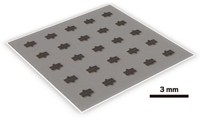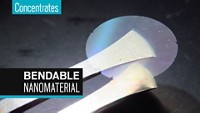Advertisement
Grab your lab coat. Let's get started
Welcome!
Welcome!
Create an account below to get 6 C&EN articles per month, receive newsletters and more - all free.
It seems this is your first time logging in online. Please enter the following information to continue.
As an ACS member you automatically get access to this site. All we need is few more details to create your reading experience.
Not you? Sign in with a different account.
Not you? Sign in with a different account.
ERROR 1
ERROR 1
ERROR 2
ERROR 2
ERROR 2
ERROR 2
ERROR 2
Password and Confirm password must match.
If you have an ACS member number, please enter it here so we can link this account to your membership. (optional)
ERROR 2
ACS values your privacy. By submitting your information, you are gaining access to C&EN and subscribing to our weekly newsletter. We use the information you provide to make your reading experience better, and we will never sell your data to third party members.
Materials
Diatoms become silica scaffolds for growing molybdenum disulfide
Hybrid silica-MoS2 material could be used in optoelectronics, catalysis, and sensing
by Prachi Patel
August 12, 2016

Sheets of molybdenum disulfide just a few atoms thick show promise as semiconductors and light-emitting materials for electronic and optical devices. But there is no easy, cheap process to make the nanometers-thin sheets. Now, researchers report a one-step method that grows MoS2 nanosheets using the silica shells of marine diatoms as a scaffold (Chem. Mater. 2016, DOI: 10.1021/acs.chemmater.6b01738).

The technique yields a hybrid material consisting of silica particles tens of micrometers wide speckled with MoS2 flakes. The material’s blend of photonic and semiconducting properties and high surface area could make it useful for catalysis, sensing, energy storage, and optoelectronics, the researchers say.
MoS2 nanosheets are typically made using mechanical exfoliation or chemical vapor deposition. Exfoliation, which involves peeling off ultrathin layers from bulk crystals, is slow and gives limited amounts of material, while chemical vapor deposition requires expensive materials and tools.
Paul O’Brien, Sarah J. Haigh, and David J. Lewis at the University of Manchester used porous diatom shells as a scaffold to grow MoS2 nanosheets. The silica in the shells is a passive insulator material, making it an ideal scaffold for other functional materials. What’s more, the periodic arrangement of the pores helps the particles trap light and gives them a high surface area. Scientists have tried to recruit diatoms for nanotechnology, photonics, and drug delivery applications, and have coated them with materials like titanium and tin dioxide. “Nature has already preformed the shell as a nanoscaffold for us to use,” O’Brien says. “It’s cheap as chips and dug out of the ground by the ton.”
To make the hybrid material, the team mixed a powder of fossilized diatom shells, known as diatomaceous earth, into a tetrahydrofuran solution containing an organometallic precursor to MoS2, which coats the particles. After filtering out the solvent, the researchers dried the powder and heated it at 450 °C, converting the precursor into crystalline MoS2 flakes that dot the silica surface. The flakes have an average diameter of about 132 nm and range in thickness from one to six atomic layers.
There are thousands of diatom species. Combining diatoms of particular architectures with other two-dimensional metal sulfides could give materials with precisely tailored properties, the researchers say. For now, they are using the method to make materials for supercapacitor electrodes.





Join the conversation
Contact the reporter
Submit a Letter to the Editor for publication
Engage with us on Twitter